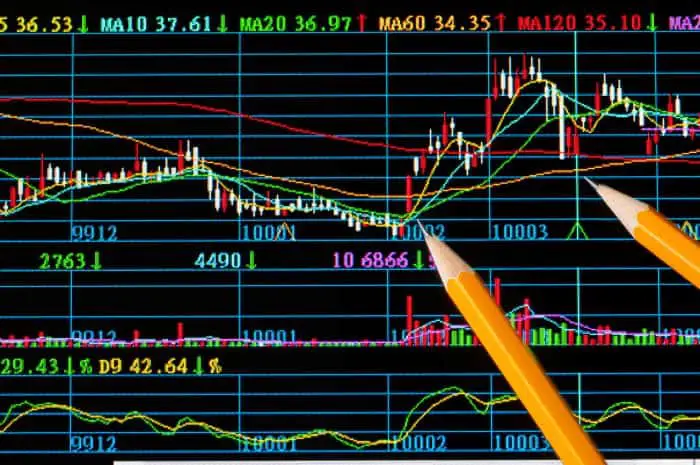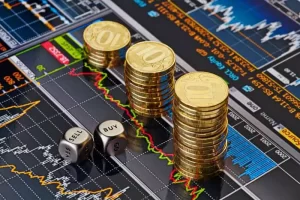Exchange-Traded Funds Explained
What are exchange-traded funds?
Exchange-traded funds are securities that combine the flexibility of stocks with the diversification of mutual funds. The exchange-traded part of the name refers to securities that are sold and bought on the market, through a brokerage firm on a stock market.
The fund part refers to how an ETF share provides easy access to diversification and exposure to a wide variety of asset classes. An ETF owns assets (stocks, bonds, gold bars, etc.) and divides its ownership into shares that are held by shareholders. A share of the profits are given to shareholders, and they may get a residual value in case the fund is liquidated.
ETFs had their genesis in 1989 with Index Participation Shares, an S&P 500 proxy that traded on the American Stock Exchange. It was however short-lived due to a lawsuit that stopped its sales in the U.S. In January 1993, Nathan Most and Steven Bloom, under the direction of Ivers Riley, designed and developed SPDRs which became the largest ETF in the world.
In 2000, Barclays Global Investors launched the iShares line which then became the leading ETF stock. As of January 2014, there were over 1500 ETFs traded in the U.S with over $2 trillion in assets.
Related post: Understanding How To Invest In Mutual Funds, Risks and Benefits For A Beginners
Types of Exchange-Traded Funds Explained in detail
As of the end of 2019, there were 7,927 exchange-traded products worldwide, according to industry researcher ETFGI, valued at approximately $6.35 trillion.
Some of the best ETF types include:
S&P 500
This is a stock market index that tracks the stocks of 500 large-cap U.S companies. S&P stands for Standard and Poor, the names of the two founding financial companies. Investors use it as the benchmark of the overall market, to which all other investments are compared.
This is because it represents the stock market’s performance by reporting the risks and returns of the biggest companies. The S&P 500 tracks the market capitalization of the companies in its index.
It’s calculated by multiplying the number of shares issued by the stock price. As of February 2020, the total market cap of the S&P 500 was $24.4 trillion.
Corporate Bonds
This is a type of debt security that is issued by a firm then sold to investors. The firm gets the capital it needs and pays the investor a pre-established number of interest payments at either a fixed or variable interest rate.
However, the bonds may also actively trade on the secondary market. When the bond reaches maturity, the payments cease and the original investment is returned.
Municipal Bonds
These are debt securities issued by a state, county, or municipality to finance its capital expenditures, including the construction of schools, roads, and other public structures. They are basically loans that investors make to local governments. These types of bonds are exempt from federal taxes and most state and local taxes.
Commodities
This type of ETF is a legal entity that determines and enforces rules and procedures for trading standardized commodity contracts and related investment products. It also refers to the physical center where trading takes place. Nevertheless, traders rarely take delivery of physical commodities.
Instead, they trade futures contracts, agreeing to buy or sell commodities at an agreed-upon price by a predetermined date.
Equities
This represents the amount of money that would be returned to a company’s shareholders if all the assets were liquidated and all of the company’s debt was paid off. Equity can be described as a degree of ownership in any asset after subtracting all debts associated with that asset.
1. Attributes of ETFs

Due to the volatile nature of ETFs, they are the perfect candidate for day trading. You can buy or sell them any time you want during the trading day. Given the fact that ETFs are available on the big market indexes, foreign currencies, and commodities, your options are unlimited.
You should pay attention to trading fees when selling ETFs.).
On the other hand, a limit order only fills at the price you want, or better.
Intraday trading has the potential for extra cost due to spreads and commissions. Thinly traded ETFs tend to have wide bid-ask spreads that can end up costing you. In general, the more active the ETF, the cheaper it is to trade. Investors need to account for three categories of the cost when facilitating ETF trades.
Redemption fees
It’s a spread of the underlying securities in an ETF basket, and is a risk. Frequent trading could significantly increase commission fees.
ETFs may trade at a price, for example:
Net Asset Value (NAV)
The NAV of an ETF represents the value of all the securities held by the ETF such as shares or bonds and cash, minus any liabilities, and divided by the number of shares outstanding. NAV is most often expressed as the value per share. An ETF’s official NAV is calculated once a day based on the most recent closing prices of the underlying securities.
Premium or Discount
A premium or discount occurs when the market price of an ETF on the exchange market rises above or falls below its NAV. If the market price is higher than the NAV, the ETF share is said to be trading at a premium. If the price is lower, it is trading at a discount.
An ETF may trade at a premium or discount when;
- Its underlying assets trade infrequently (e.g. bonds)
- Markets are in a heightened state of instability or flux (e.g. at market open or close)
- Its underlying assets trade at different hours than the stock exchange (e.g. commodities)
2. Cost
Since ETFs track the return of a market index and many are passively managed, they are cost-efficient. Therefore, only minor adjustments are needed for the ETF thus resulting in lower management fees. However, commissions depend on the brokerage and which plan is chosen by the customer.
For example, a fee schedule from an online brokerage firm in the United States ranges from $10 to $20, but it can be as low as $0 with discount brokers.
The expense ratio on most ETFs is about 0.01-0.25%, meaning that for every $1,000 you invest you will only pay $0.10 to $0.50 in fees.
Other cost advantages include:
Record keeping:
Unlike traditional ETF mutual funds, ETF shares are book-entry only securities that behave just like shares. This makes it easy to track your investment progress due to the details recorded by your brokerage company.
Transfer agent:
The transfer agency function is one of the most expensive components of operating a traditional fund and is reflected in their higher expense ratios. Since ETFs behave like shares, they eliminate the need for costly transfer agent services.
This results in an overall cost reduction for the investor by a minimum of 5 basis points as ETF expenses tend to reflect the cost savings on this function.
Other fees are lower
- Management fee: This is the amount paid to the ETF manager that is expressed as a percentage of the fund’s average assets for the year. The fees tend to range from 0.03 to 0.1% for the more widely followed products.
- Management expense ratio: includes the management fee plus the fund’s day-to-day operating expenses such as record keeping, fund valuation costs, audit, and legal fees. It also includes sales taxes.
You should consider the cost of trading ETFs before you purchase in order to determine which ones best suit your portfolio.
3. Tax efficiency
ETFs are structured for tax efficiency, therefore, making them more attractive than mutual funds. They have fewer taxable events for instance; it has no capital gains transactions. ETFs are not redeemed by holders.
Instead, holders simply sell their ETF shares on the stock market or effect a non-taxable redemption of a creation unit for portfolio securities.
It is imperative to select an ETF carefully before investing and ensure you get the best ETF deals. For instance, two ETFs in the same sector or name can have totally different stock composition and perform differently. Take an example of water-related stocks sold by two different companies.
When the top holdings of each are analyzed, it is clear that they take different approaches to the niche sector. While one ETF may be composed of water utilities, another may have infrastructure stocks as the top holdings.
The focus of each ETF results in varying performance.
ETFs are great assets or tools. The more you learn about and understand them, the more effectively you can make them work in your favor.
4. How to Trade Exchange Traded Funds
- A very important benefit of an ETF is the stock-like features offered. They can be traded whenever the market is open. This means that investors can carry out the same types of trades that they can with a stock.
- They can sell short (investing in such a way that the investor will profit if the value of the asset falls), use a limit order, use a stop-loss order, buy on margin (buying securities with cash borrowed from a broker, using the bought securities as collateral), and invest as much or as little as they wish.
- ETFs are very liquid (availability of cash or cash equivalents to meet short-term operating needs). Therefore, ETF shares can be bought or sold without substantially impacting the stock price.
5. Cost of Liquidity
The cost of liquidity for an ETF is an important factor to consider when selecting an ETF. When markets are in the throes of buying and selling fever, liquidity can be rare and costly, as reflected in the bid-ask spread.
If an ETF consists of less actively traded stocks, the spreads (gaps between the bid and the ask prices of security) on those securities can widen further.
This leads to higher total costs of ownership. The smaller the spread, the better because it makes the security more profitable. Commissions also vary based on the nature of the ETFs. A commission is a service charge assessed by a broker for handling securities trades for a client.
When trading ETF shares, it is best to use limit orders (instructions to buy or sell securities at a specific price or better). They are very effective in managing orders or positions that are not being actively watched.
When it comes to limit orders, it allows you to really specify the price you’re looking to purchase that ETF stock at and ensures that you get the best price during execution.
If the market is moving fast, it is a bad thing for limit orders because prices get extremely competitive therefore your order may take too long or fail to be executed.
Related post: What Is a Robo Advisor: Features and Advantages To Investors
6. Risks of ETF Investing
Risk is an inherent part of investing. Investors who take on additional risk must be comfortable with experiencing significant periods of underperformance in the expectation of achieving higher returns over the longer term. The following are the risks which apply when investing in ETFs:
Counterparty risk
Exchange-Traded Funds/Commodities do not always hold physical assets. If the investment bank providing the future/option fails, the ETF will lose part or all of the money invested.
Trading within foreign market closures
ETFs traded on a particular exchange can be bought or sold between normal market opening hours (8 am to 4.30 pm). However, many of the indices an ETF might track might be open outside the exchange on which the ETF is listed. This can result in a disparity between the daily performances of the ETF.
Invisible costs
While the annual management charge may be stipulated, other charges may be less visible.
7. Exchange-Traded Funds Returns

Getting returns from ETFs depends on the underlying investments of that ETF over time. You’ll hopefully make money from a combination of capital gains (an increase in the price of the stocks your ETF owns) and dividends paid out by those same stocks.
ETFs should ultimately perform roughly in-line with their underlying holdings, short of some sort of structural problem or other low-probability events.
8. Advantages of ETF investing
- ETFs have low expense ratios and you can buy a diversified portfolio with the same low commission (typically $5) since they trade like stocks.
- They can be traded intraday which can be an important benefit when volatility is high.
- ETFs allow investors to take positions in alternative or even exotic investments that are unavailable in other forms to small investors.
9. Disadvantages of Exchange Traded Funds investing
- Many ETFs participate in over-diversification. Since they are generally programmed to track a specific index, they may end up not owning the best stocks.
- Since most ETFs don’t balance their portfolios, they may own more expensive stocks and less of the underpriced ones.
10. Is it worth investing in ETFs?
Investing in ETFs is a great idea due to their exposure to diverse sectors and minimal costs incurred, unlike other funds. When you learn to analyze and pick stocks you may develop a diverse ETF portfolio of growth and high-value stocks that pay dividends.
11. Difference between ETFs and Mutual funds
When you invest in a mutual fund, you own a share of the underlying assets, which is not the case with ETFs. Mutual funds may only be bought or sold at the end of the trading day while ETF shares trade throughout the day.
Conclusion to Exchange Traded Funds Investing
ETFs are better because of their combination of low costs, ease of access, and emphasis on index tracking. In addition, their ability to provide exposure to various market segments makes them useful especially if your goal is to accumulate long-term wealth with a diversified portfolio.
You may also like the following posts:
- Does Paying Yourself First Lead to Positive Net Wealth?
- How To make Money As a Social Media Manager
- Mompreneur Lifestyle: 12 Best Business Ideas to Start Today
- A Step By Step Guide: How to Get a Mortgage Pre-approval Before You Start Looking For a Home
- 32 Easy Ways to Earn Money Online Without Investment
- 8 Best Investing Apps For Beginners To Grow Your Money On A Small Budget
- Understanding How To Invest In Mutual Funds, Risks and Benefits For A Beginners
Let me know your thoughts in the comments below!!


































2 thoughts on “Exchange Traded Funds (ETFs) Explained In Simple Terms (How Can You Make Them Work For You)”
Pingback: What Is a Robo Advisor: Features and Advantages To Investors - Investadisor